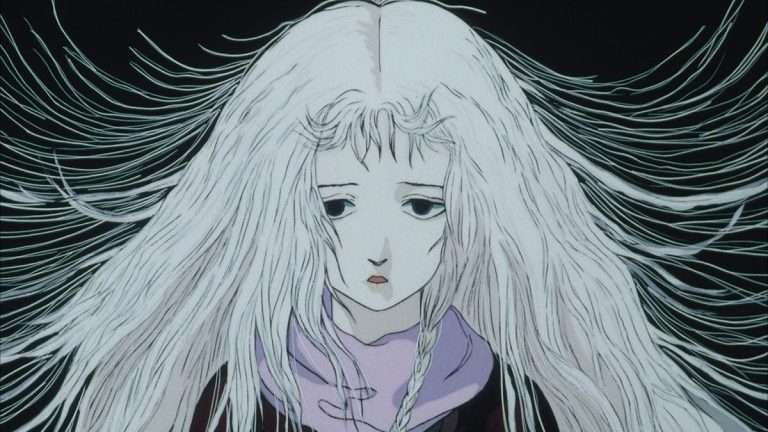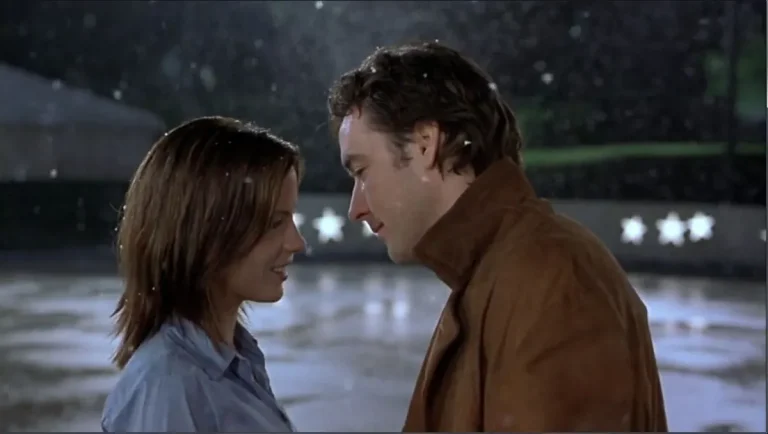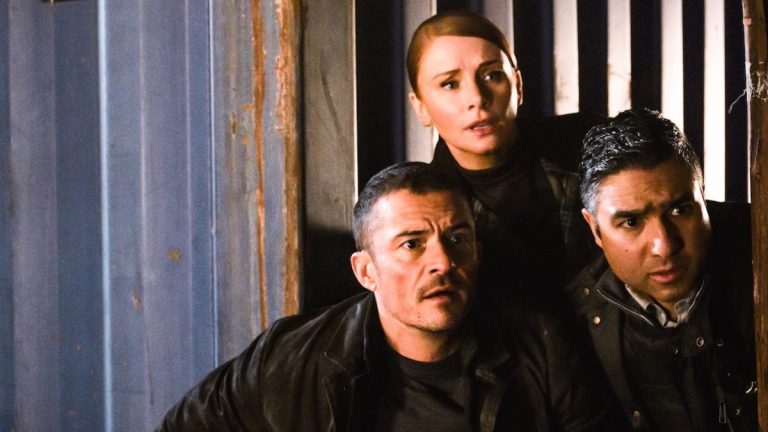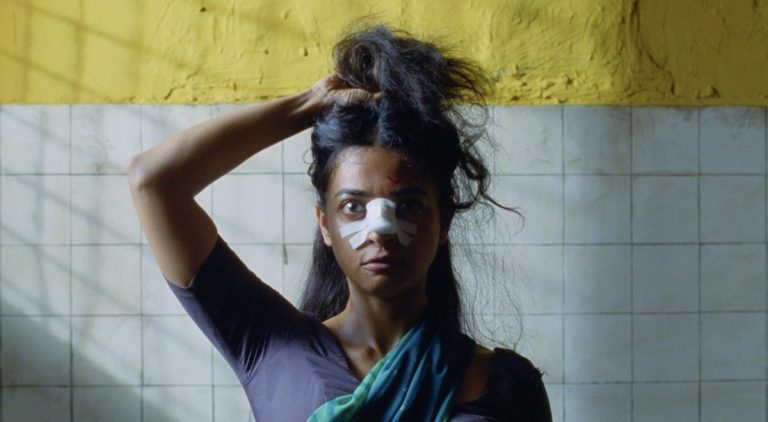In his AMA on r/movies, director and co-writer Ethan Berger gamely answered a couple dozen thirsting filmmakers about how he got his script for “The Line” (2023) produced. This is the part where I tell you what he said. And, I must warn you. If you are a filmmaker who wants something produced, you may be disappointed. We always are. We are disappointed because Ethan Berger wrote, in far more humble terms, what they always write: that the actors loved the script.
So, I went into this viewing, of a screener on my television, knowing this. Oh, brother. We got a big great script coming up. Arms folded, on the attack. Thinks he’s Schrader, over here… Well, the script is fabulous. The cast, including Alex Wolff, Austin Abrams, and Halle Bailey, burst off the screen. Suitably ravenous. Outside of the obsessively designed world of Ari Aster’s “Hereditary,” Mr. Wolff is allowed again to dive into each scene’s every nuance, exploring the spaces in between dialogue with a persistent searching quality that the lost immature college sophomore and the artist share. Not since “Palo Alto” has his work been so fine. Which was his brother, anyway.
What’s equally novel about the film is its counterintuitive style. Those seeking the glitchy MTV editing of “Rules of Attraction” or the bacchanal hedonism of “Animal House” should be warned. This movie is not a good time. Music cues do not give way to charged rhythmic montages. “Blue” is the film’s unofficial theme song. And for a movie set in 2014, 16 years after the song’s release, that is as significant as the references to John McCain’s private parts and “Enter the Void.” Parties are experienced with a flat remove that is likely closer to Jim Jarmusch’s time at Columbia University parties than any cool frat kid’s.
Speaking of Jarmusch. The style of this movie is, to use the language of fellowship, a grower not a shower. It is leaned into from the beginning but only grabbed hold of me toward the end of the first act. An impressionistic opening shows Wolff and his buddy singing Billy Squire’s “Lonely is the Night” during their freshman year. It is disorienting, despite the actors’ enthusiasm. Shortly after, a stubborn two-shot at the dining room table shows mother and son chatting about Wolff’s academic struggles.
The dining room table between them is the focus of the scene, and I have to admit that so early in the movie, I wondered if the director knew what the hell he was doing. Thankfully I pressed on. The actors sell this unconventional visual grammar, and by the time we arrive on the Sumner campus, we understand that “the dining room table between us” is part of Wolff’s core. A disconnect. A loneliness. “The Line” isn’t a moral tale about fraternities. Loneliness. Disconnect — Daniel Rosen, formerly of Grizzly Bear, is the composer here. I did not notice his score until the moment when a rich kid named Mitch decided to humiliate one of the pledges. This emphasis provides a keyhole into the story’s real subject: the failures of male friendship.
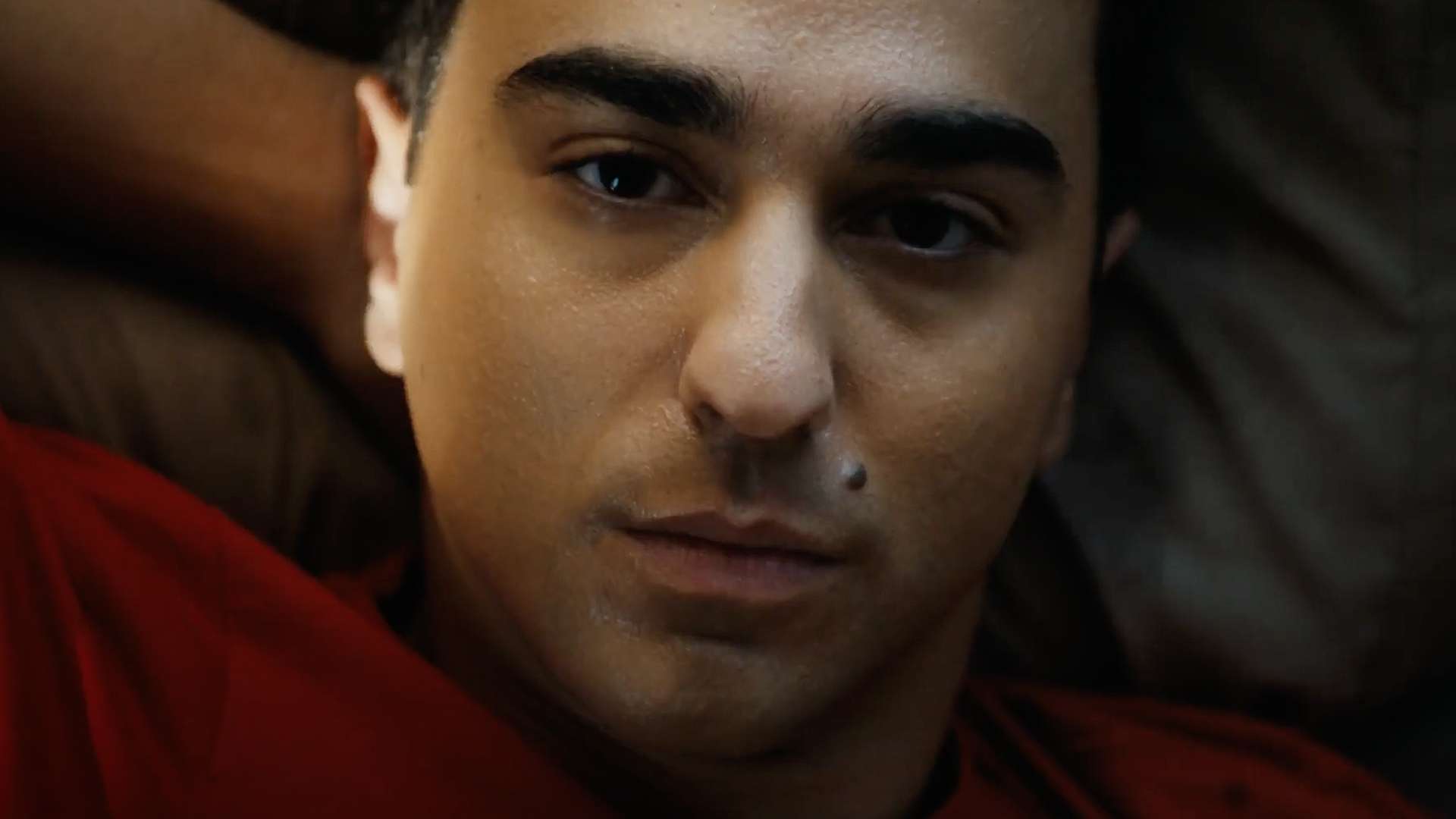
I was moved throughout the movie by several instances in which the director chose to play the long game, rather than hitting us with effect after effect. You will drift along inside the movie’s matter-of-fact presentation, only to be suddenly overwhelmed with a subtle emphasis. A guitar strumming, a more expressive framing. The minimalist approach here, though not totally dissimilar from Animal House’s shambolic New Hollywood jaunt, felt novel.
“The Line” is particularly subtle in handling the protagonist’s background. The screenplay skillfully uses references to other people’s family backgrounds (particularly Mitch’s CEO father, and Pledge whose dad is the mayor of San Antonio) to suggest what is lacking in Sunshine, in ours. Setting the narrative momentum on this level is what makes “The Line” far more than an issue movie. It is a study of behavior, first and foremost. And a damned good one.
The staging leans on an awkwardness. In some moments this is a clear expression of the mood. A clinical wide of a dozen Pledges thrusting their pelvis (pel-vi?) to Eiffel 65’s “Blue” is a good example. A long dialogue between Scoot McNairy’s character and Wolff is another. The former is effective because it shows us all the action at once, refusing to use the easily manipulated rhythmic properties of cutting to further emphasize the awkwardness, or to make it go away.
It is matter-of-fact. The right choice. The latter works because the stakes are incredibly high and we want to see the pauses in real time. We don’t want to be cheated. One cut in this scene is simply to show Alex Wolff’s face in real-time, continuing to not speak. It is an emphasis of a pause, and it is perhaps the single most heartbreaking moment of the film. One of those “subtle emphases” I mentioned.
Really, though, the greatest choice the filmmakers make is to stay with the actors. The movie is stacked with energized performances. Abrams’ villain is casual and cool in a way that viciously sees us rooting against him. Wolff, with his southern accent, is open-faced and committed to his decisions even when we see that they are horrible. Writing about acting is like dancing through chemistry. It is hard to make it mean something. Seeing this ensemble in action will be a dynamic thrill for even those audience members who can not stomach the audience’s crueler turns. I am a steward of bleak cinema, so I was deeply affected by the time the credits rolled.

